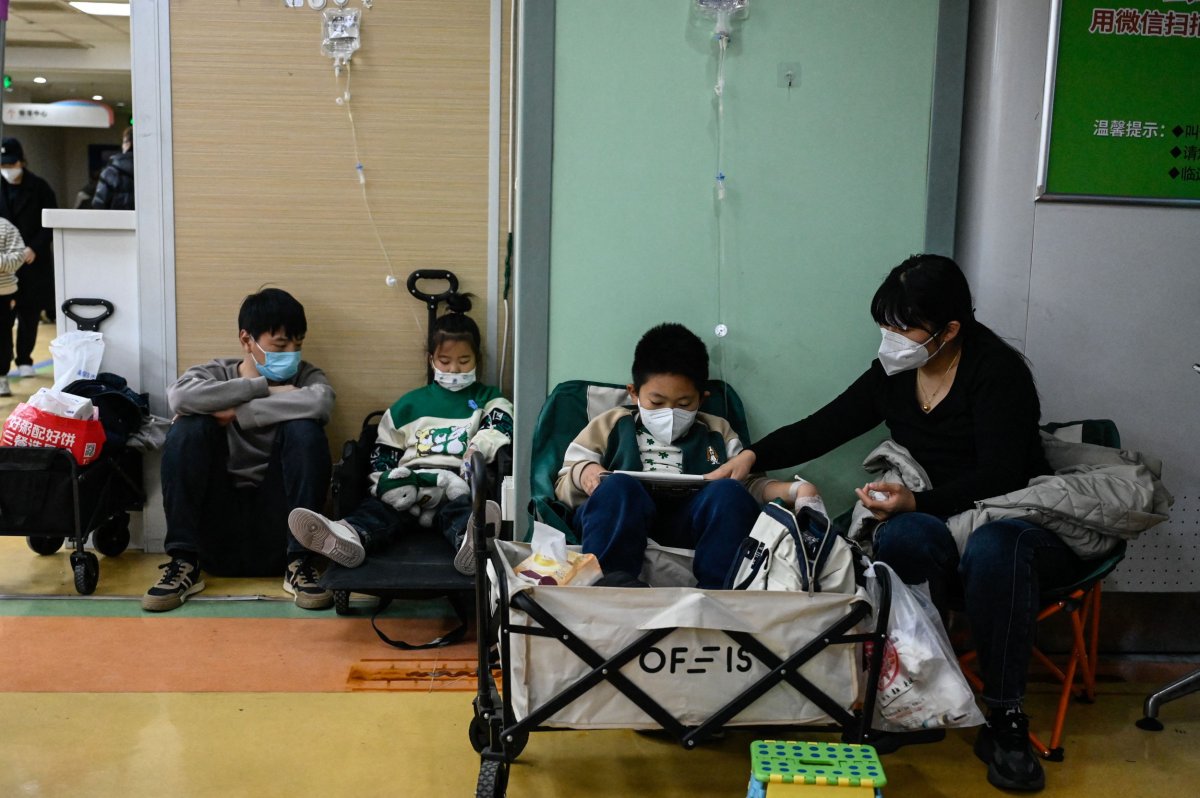Infection
Chinese hospitals overloaded as pneumonia rampages
China is grappling with an alarming surge in respiratory illness, particularly among children, in many parts of the country, according to reports in local media, state news outlets and most recently the World Health Organization.
The ailments, which the global health agency believes is due in part to an upsurge of mycoplasma pneumonia, is not reported to have caused death or widespread severe illness at this time. However, the outbreak is nonetheless placing immense pressure on China’s healthcare system due to existing limitations.
A concerning capacity shortfall in China’s hospitals, among other vulnerabilities, was first raised at the height of the country’s fight against widespread COVID-19 infections this year, after Beijing dropped all anti-virus controls in December—virtually overnight.
The Tianjin Children’s Hospital, located in a major port city near Beijing, reported on November 18 a single-day record of 13,171 young patients across its outpatient and emergency departments, according to a local newspaper.
Beijing Jingdu Children’s Hospital was also feeling the strain, with its 300 beds at 90 percent capacity due outpatient volumes, Chinese news agency Caixin reported Thursday.
Long queues, both inside and outside hospitals, illustrated the the overwhelming demand for medical attention. Videos reportedly showing winding lines at Tianjin Children’s Hospital as well as Shenyang Children’s Hospital, in northeastern Liaoning province, circulated on social media, reflecting the severity of the situation.
Li Yuchuan, director of Beijing Children’s Hospital, said the internal medicine department was handling more than 7,000 patients daily. The surge was attributed to a particularly severe year for mycoplasma pneumoniae infections, which put immense pressure on medical resources, according to Sun Yuan, president of Beijing Jingdu Children’s Hospital.
“Doctors have been working overtime, and all medical resources have been used to meet patient demand, but it still may not be enough,” he said.
COVID-19 Comparisons
Li Tong, head of Beijing Youan Hospital’s department of respiratory and infectious disease, told Caixin that the spike might be linked to weakened immune systems in children due to three years of anti-virus restrictions, which had the effect of limiting their exposure to seasonal infections and SARS-CoV-2, the virus that causes COVID-19.
Reports from citizens on social media described exceedingly long wait times. One hospital in Beijing announcing a 24-hour wait for its pediatric emergency department. Some frustrated individuals recounted waits of several days for medical attention.
One Beijing resident’s wrote that after registering for an appointment due to difficulty breathing, they had to wait until Friday to be seen by a doctor. “I felt like I was going to die suddenly,” they said.
Another netizen said in a message shared on X (formerly Twitter) that parents at one Beijing hospital where staff’s triaging efforts had ground to a standstill became so frustrated they called the police.
The WHO had for days been requesting detailed data from China about the clusters of infections, including epidemiological and clinical information and laboratory results from affected clusters.
Chinese health authorities, according to a WHO update on Thursday, attributed the rise in illnesses to known viruses including mycoplasma pneumonia—responsible for the bacterial infection commonly known as walking pneumonia—but also respiratory syncytial virus, adenovirus and influenza.
Chinese officials said the surge in cases was normal, given China’s lifting of COVID measures less than a year ago. No new pathogen has been detected, they stressed.
Jade Gao/AFP via Getty Images
The update comes as social media users drew comparisons between the current respiratory illness surge and the initial stages of the COVID outbreak.
ProMed, the alert system known for its role in bringing attention to the coronavirus outbreak in 2019, first reported numerous children being admitted to hospitals with high fevers but without typical pneumonia symptoms.
The geographical spread of cases, spanning over 400 miles from Beijing to Liaoning, suggested a wider outbreak that began in northern China.
The outbreak intensified around China’s National Day holiday in early October, indicating potential exposure within schools. The situation prompted renewed concerns about the resilience of China’s healthcare system and its ability to manage public health crises effectively.
Uncommon Knowledge
Newsweek is committed to challenging conventional wisdom and finding connections in the search for common ground.
Newsweek is committed to challenging conventional wisdom and finding connections in the search for common ground.

